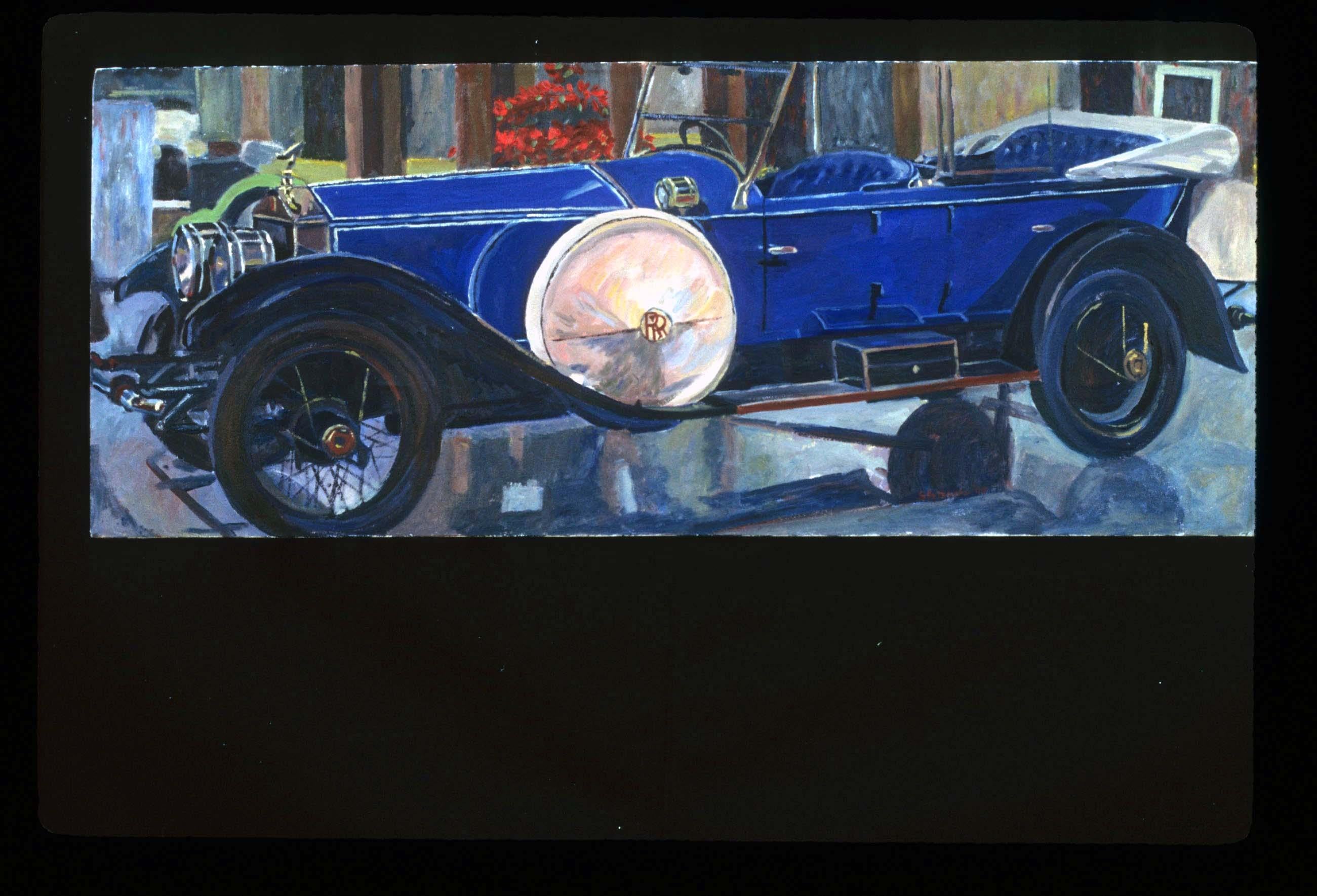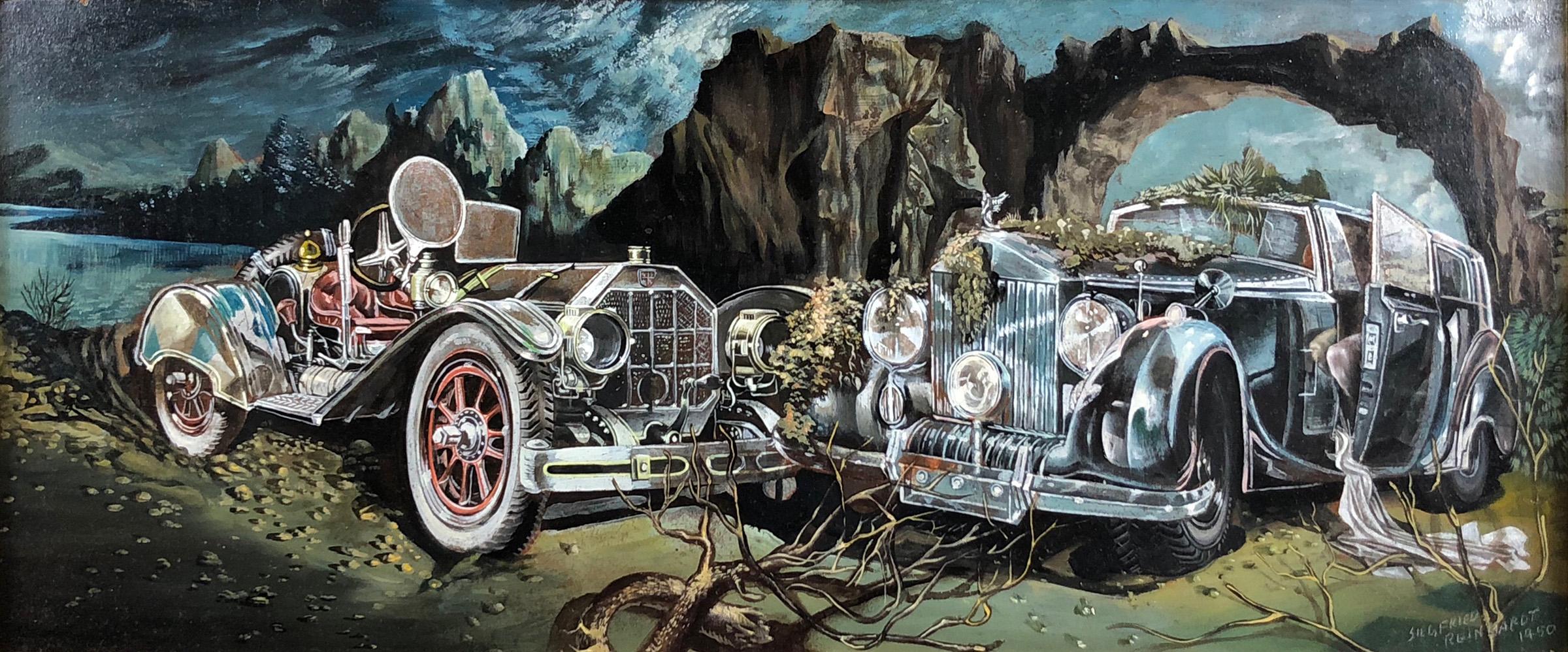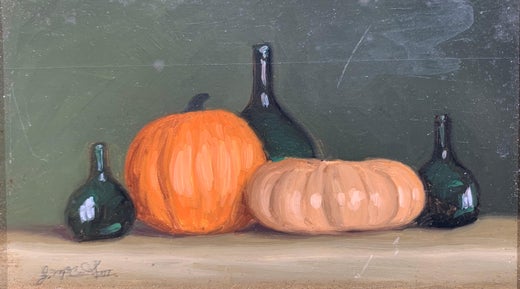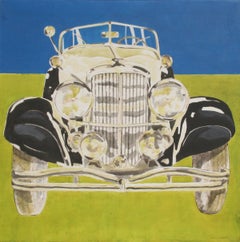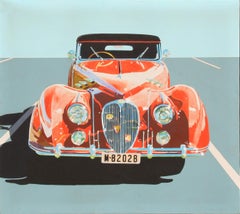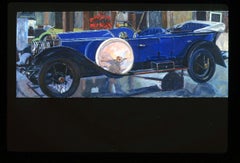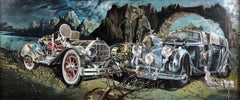Items Similar to Rolls Royce, Oil Painting by John McCormick
Want more images or videos?
Request additional images or videos from the seller
1 of 6
John McCormickRolls Royce, Oil Painting by John McCormick1983
1983
$9,500
£7,049.37
€8,211.55
CA$13,224.07
A$14,726.19
CHF 7,664.17
MX$181,572.19
NOK 97,609.07
SEK 91,743.06
DKK 61,268.34
Shipping
Retrieving quote...The 1stDibs Promise:
Authenticity Guarantee,
Money-Back Guarantee,
24-Hour Cancellation
About the Item
Artist: John McCormick, American
Title: Rolls Royce
Year: 1983
Medium: Oil on Canvas
Size: 18 in. x 32 in. (45.72 cm x 81.28 cm)
- Creator:John McCormick (1949, American)
- Creation Year:1983
- Dimensions:Height: 18 in (45.72 cm)Width: 32 in (81.28 cm)
- Medium:
- Movement & Style:
- Period:
- Condition:
- Gallery Location:Long Island City, NY
- Reference Number:1stDibs: LU4663212203
John McCormick
John McCormick is an American Postwar and Contemporary artist renowned for his realist oil paintings of classic cars such as the Corvette, Rolls Royce and Thunderbird. He also painted beautiful landscapes, sailboats and still lifes. McCormick often signed his work in the lower center of the canvas. Born in 1949, he lived in Massachusetts. Numerous key galleries and museums such as Harris Harvey Gallery have featured John McCormick's work in the past. He has been active in the San Diego, New York and Seattle art scenes.
About the Seller
4.9
Platinum Seller
Premium sellers with a 4.7+ rating and 24-hour response times
Established in 1979
1stDibs seller since 2014
3,034 sales on 1stDibs
Typical response time: 1 hour
- ShippingRetrieving quote...Shipping from: Long Island City, NY
- Return Policy
Authenticity Guarantee
In the unlikely event there’s an issue with an item’s authenticity, contact us within 1 year for a full refund. DetailsMoney-Back Guarantee
If your item is not as described, is damaged in transit, or does not arrive, contact us within 7 days for a full refund. Details24-Hour Cancellation
You have a 24-hour grace period in which to reconsider your purchase, with no questions asked.Vetted Professional Sellers
Our world-class sellers must adhere to strict standards for service and quality, maintaining the integrity of our listings.Price-Match Guarantee
If you find that a seller listed the same item for a lower price elsewhere, we’ll match it.Trusted Global Delivery
Our best-in-class carrier network provides specialized shipping options worldwide, including custom delivery.More From This Seller
View AllHispano Suiza, Photorealist Acrylic Classic Car Painting by Phyllis Krim
By Phyllis Krim
Located in Long Island City, NY
Artist: Phyllis Krim, American
Title: Hispano Suiza
Year: circa 1978
Medium: Acrylic on Canvas, signed l.r.
Size: 40 x 40 inches
Category
1970s Contemporary Figurative Paintings
Materials
Canvas, Acrylic
Duesenberg, Photorealist Acrylic Classic Car Painting by Phyllis Krim
By Phyllis Krim
Located in Long Island City, NY
Artist: Phyllis Krim, American
Title: Duesenberg
Year: circa 1978
Medium: Acrylic on Canvas, signed l.r.
Size: 40 x 40 inches
Category
1970s Contemporary Figurative Paintings
Materials
Canvas, Acrylic
Delahaye, Photorealist Acrylic Classic Car Painting by Phyllis Krim
By Phyllis Krim
Located in Long Island City, NY
Artist: Phyllis Krim, American
Title: Delahaye
Year: circa 1978
Medium: Acrylic on Canvas, signed l.r.
Size: 48 x 54 inches
Category
1970s Contemporary Figurative Paintings
Materials
Acrylic, Canvas
"Rhineback Special", Automobile Painting by Robert Bidner
By Robert D.H. Bidner
Located in Long Island City, NY
Artist: Robert D. H. Bidner, American (1930 - 1983)
Title: Rhinebeck Special
Year: 1976
Medium: Acrylic on Panel, signed l.l.
Size: 22.5 x 32 in. (57.15 x 81.28 cm)
Frame: 23.5 x 33 ...
Category
1970s American Realist Still-life Prints
Materials
Acrylic, Panel
Alfa Romeo Auto Show, Acrylic Painting on Board by Dennis Simon
Located in Long Island City, NY
Simon’s automotive illustrations have been featured in Road & Track, Sports Car International, Automobile, Thoroughbred and Classic Cars, Classic and Sportscar, and Vintage Motorsport magazines. Favorite projects document automotive racing history, and he has designed over 60 original automotive racing posters for such clients as UNOCAL, Michelin, BF Goodrich, SVRA’s Bahama Vintage Grand Prix, and a series of Monterey Auction posters. Simon designed and illustrated the cover of the Indianapolis 500...
Category
Late 20th Century American Realist Landscape Paintings
Materials
Acrylic, Illustration Board
Duesenberg, Photorealist Classic Car Screenprint by Phyllis Krim
By Phyllis Krim
Located in Long Island City, NY
Duesenberg
Phyllis Krim, American (1930–2014)
Date: 1978
Screenprint, signed and numbered in pencil
Edition of AP 30
Image Size: 22 x 22 inches
Size: 26 in. x 26 in. (66.04 cm x 66.0...
Category
1970s Photorealist More Prints
Materials
Screen
You May Also Like
PALM BEACH American PHOTOREALIST Rolls Royce Hyper Realist Painting
By Clarence Measelle
Located in New York, NY
Up for sale, I have a large Photorealist painting by Contemporary artist Clarence Measelle
The painting is very large and depicts a Palm Beach street view through a Rolls Royce sid...
Category
1970s Photorealist Landscape Paintings
Materials
Oil, Acrylic
Made in America, Painting, Oil on Canvas
By Shawn Nelson Dahlstrom
Located in Yardley, PA
Auto Portrait of 1922 Rolls Royce which was made in America. The RR on spare tire cover was in red and that indicated the car was made in the USA. :: Painting :: Realism :: This piec...
Category
1990s Realist Paintings
Materials
Oil
Surreal Landscape with an American Underslung and Rolls Royce
By Siegfried Reinhardt
Located in Missouri, MO
Siegfried Reinhardt
"Surreal Landscape and the Artist with his American Underslung and Rolls Roys" 1948/50
Oil on Panel
Signed and Dated Twice Lower Right
Panel Size: approx. 11 x 24 inches
Framed Size: approx. 13.5 x 26.5 inches
Siegfried Gerhard Reinhardt born July 31, 1925 in Eydkuhnen, Germany, died October 24, 1984 in St. Louis, Missouri was a prolific artist and teacher based for most of his career, 1955-1970 at Washington University in St. Louis, where he had taken his Bachelor of Arts degree in English Literature in 1950. He was also a prominent member of the St. Louis Artists Guild. He was the son of Otto Frederick and Minni (Kukat) Reinhardt, and emigrated with them in 1928 (naturalized in 1936). His best-known work is perhaps the series of murals he executed at Lambert International Airport illustrating the history of aviation. He was a pioneer in combining elements of realism and surrealism in a style known sometimes as superrealism. From 1949 to 1984 he worked with Emil Frei in the design and execution of stained glass windows, including the (1960) Easter Window in the Lutheran Church of the Resurrection, in Sunset Hills, Missouri, of which Reinhardt said:
"The 'flame' symbolizes the Holy Spirit as it descended in tongues of fire over the heads of the disciples in the miracle of the upper room in the presence of the Lord Jesus...
Category
Mid-20th Century Surrealist Landscape Paintings
Materials
Oil, Wood Panel
Architect's Dream, Painting, Oil on Canvas
By Shawn Nelson Dahlstrom
Located in Yardley, PA
Antique Auto portrait found in collection of Heritage Museum, Sandwich MA :: Painting :: Realism :: This piece comes with an official certificate of authe...
Category
1990s Realist Paintings
Materials
Oil
Minerve, Four Seater Touring Car
By Alexander R. Richardson
Located in Fort Washington, PA
Date: 1917
Medium: Gouache on Illustration Board
Dimensions: 13.00" x 20.75"
Signature: Signed
Category
1910s Still-life Paintings
Materials
Gouache, Illustration Board
"Cadmium MG Y Type" (Original Acrylic Painting)
By Shan Fannin
Located in Denver, CO
Shan Fannin's (US based) "Cadmium MG Y Type" is an acrylic painting that depicts a Cadmium MG Y Type.
Born 1969 in California, artist Shannon “Shan” Fannin brings vehicles to life ...
Category
2010s Photorealist Figurative Paintings
Materials
Acrylic, Wood Panel
Read More
Romare Bearden’s Humanity Infuses His Bright, Bold Art
Through collage, painting and printmaking, the artist foregrounded Black life in America in revolutionary new ways.
Chryssa’s 1962 Neon Sculpture Was Way ahead of the Art-World Curve
By working with lettering, neon and Pop imagery, Chryssa pioneered several postmodern themes at a time when most male artists detested commercial mediums.

